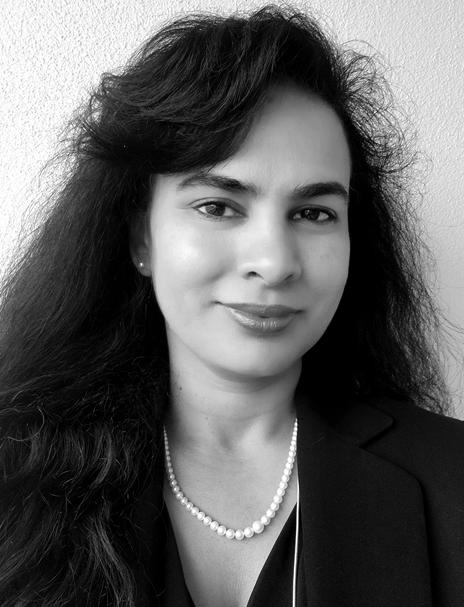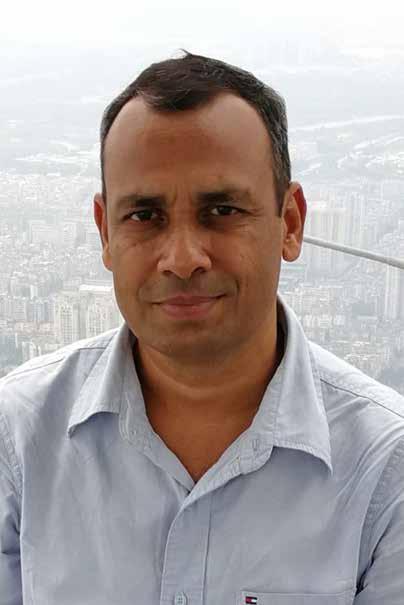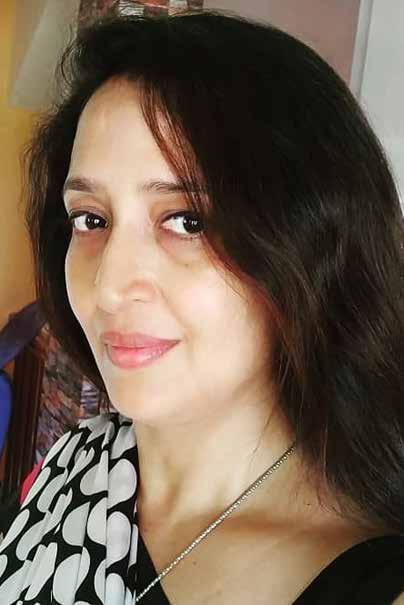
13 minute read
John Pettigrew Irish Landscape Architect
John Keeble Pettigrew was born and lived his formative year in the Republic of Ireland. He was educated at St.Columba’s college up in the foothills above Dublin. After finishing school he attended Gurteen Agricultural/Horticultural College in County Tipperary, followed by The Horticultural Institute, Malahide and finally The National Botanic Gardens, Glasnevin, Dublin where he graduated in 1980. He has been designing Gardens for nearly four decades in Asia, Europe and the USA. His landscape architect company, Design In Nature, is based in Ubud, Bali, Indonesia, where he lives with his family. John’s landscape designs are inspired by nature and his love of water and other natural elements. He has won a number of international awards. He is available at Design in Nature studio, Rumah John, Banjar Dangin Labak, Singakerta, Ubud, Gianyar, Bali, Indonesia. Email: the_grew@hotmail.com
Mark Ulyseas
Advertisement
John is one of those rare creatures that flourishes in a sublime world, the world of nature, abiding by her unwritten rules, to sculpt landscapes that resonate with the six senses.
His artwork reflects a deep understanding and respect for the living world of trees, flowers, water bodies and more. It is as if he guides the natural forms to engage and assist his every creation to form a delightful and harmonious environment that embraces all who venture therein.
John is based with his family in Bali, Indonesia.
This interview with John is a mere glimpse of his life and works.
Why are you a landscape architect? What was your inspiration to become one? Does your ancestry have anything to do with this?
I have always had a love of nature and the outdoors, inspired by my surroundings growing up in County Wicklow - The Garden of Ireland.
My father Stanley Pettigrew, an accomplished Irish landscape artist, was the Rector and later Canon of Wicklow and Glendalough Parish. My mother, Vera Pettigrew, an author in her own standing, was a great lover of animals and nature in all its forms. We lived in an old Victorian house with a sprawling garden surrounded by fields and beyond that by the beautiful Murrough lakes, which flowed out into the ocean through Wicklow Town Harbour.
The formative years of childhood was embedded with images of the great Irish outdoors: rolling verdant hills, the purple mountains in the distance, the fascinating aquatic life in gurgling streams and still water bodies and the abundant wildlife. My father’s artwork reflected this pulsating ethereal beauty of nature, unblemished images of Irish countryside; truly a celebration of life itself.
My mother’s (Vera Pettigrew) books recorded for posterity the enchanting aspects of rural Ireland and its natural environs. Perhaps one should read her book Where the River Flows: Annamoe Rectory.
With such parents one couldn’t but be influenced by all things beautiful and wholesome. It was these formative years that drew me towards nature’s embrace. After I left boarding school I enrolled with the Gurteen Agricultural College in Tipperary. This was followed by a year at the Horticultural Institute, which was just outside Dublin. I was lucky enough to be awarded a scholarship to The National Botanic Gardens and College in Glasnevin, Dublin from where I graduated in 1980.
It is said that we are the sum total of our ancestors and that we carry the dreams of our loved ones who have gone before us. Perhaps this is true for me, in a manner of speaking, for my ancestor Professor James Bell Pettigrew wasa Scottish anatomist and noted amateur naturalist, aviation pioneer and museum curator. He was a distinguished naturalist in Britain and Professor of Anatomy at St. Andrews University from 1875 until his death. It was here that The Bell Pettigrew Museum was set up, posthumously.



His early design included the construction of a flying machine prior to the Wright Brothers. In fact it was the Wright brothers who studied Professor James Bell Pettigrew volumes on design titled Design In Nature. On his first flight Professor James Bell crashed, was injured and shortly passed away. But the flying machine was not his only invention. Design in Nature has become essential reading for academics.
I have named my landscape architecture company Design in Nature in honour of him.
Another uncle, engineer Henry Bell, designed and built the first paddle steam engine called the Comet. It was in operation in 1812 and provided steam ship service on the River Clyde.
It is really fascinating to read their volumes and manuscripts and study all their mechanical drawings and hand drawn sketches. Their works give me inspiration and also a sense of meaning to the design in nature.
My ancestors and my parents have been the guiding light, the inspiration for my artwork in nature. And for this I am grateful
What is your design philosophy? What role does Nature play in this? And what do you hope to achieve?
I have a deep love of nature and this is reflected in the raw materials that I use in my design landscape architecture plans. Local raw materials are sourced keeping in mind the delicate balance of the natural world. So my design of hotels, resorts and private gardens centres on indigenous tree and plant species. This enables my art to come alive and take on a life of its own in harmony with its environs whether it is in Bali, India, China or anywhere else in the world.
Water is an intrinsic element in my art. I don’t recall that I have ever designed a garden without a pond, stream, lake or any other water feature. Water is the very breath of nature. It sustains all life. The sound of water flowing, trickling, gushing or cascading creates a sense of perception, a feeling of freshness, of being alive. The colours of the natural world that reflect on the surface of water give life to the montage of greenery.



From Ireland to Bali is a long way – why are you based here?
After I graduated from college I started designing gardens around Dublin and County Wicklow where I lived ... in those days it was mainly for private houses or schools.
During the winter months when the soil freezes over people don’t think about their gardens so much. So during these months I would go off travelling.
Our family has quite a lot of travel in our blood. My father was born and lived the first four years of his life in Chile, where my grandfather Keeble Pettigrew was an engineer designing bridges and roads in Chuquicamata, north of Valparaiso. I also have uncles and their families living in Africa and New Zealand.
I would head off with my backpack for a few months and travel around the southern Mediterranean where the climate was warmer.... and have my own adventure ... after that it was India, Nepal, Mexico and South East Asia.
I would always secure landscape projects prior to taking the winter months off so that I would have work to come back to in Spring.
Despite my travels over the winter months, I had always taken my work very seriously.
From 1984 to 86 I moved to the USA. I lived and worked in San Francisco and the Bay Area .
I was very fortunate during the 1980’s because I started redesigning the gardens of a large house and estate just outside the Village of Delgany in County Wicklow. This was a great opportunity as the client was happy to let me take off for a few months during the winter. This allowed me to continue with my travels.

I arrived in Bali In 1988 after travelling around Thailand, Malaysia and other parts of South East Asia.
I first visited Ubud (the cultural centre of Bali), which is home to artists, carvers, dancers, up in the foothills of the island. I fell in love with the stunning natural tropical beauty of the jungle, the deep verdant gorges, the fast flowing rivers and the lush green rice fields. Added to this was the intricately designed temples and palaces and the warm and friendly Balinese village folk.
In the early days my plan was to continue working in Ireland and visit Bali a few months during the winter. However, in the early 1990s when the building boom hit Bali some projects were offered to me. From then on I started working here.
I secured a piece of land a built a small house overlooking a beautiful valley just outside Ubud. This has been my home where my family, our animals and I live.
The first few years were challenging. There was no electricity or running water.
The first break came when I got the contract to design the Bali Reptile Park in Singapadu. Following this was a project for a high end hotel/resort.
Not long after this I met my future wife, Novi (Anindra Novitasari), who originally comes from Surabaya in Java. She happened to be working in Sales & Marketing at the resort, Begawan Giri now Como Shambhala Estate, where I was designing the gardens.
Could you share with the readers a short summary of your years as a landscape architect, some of your favourite projects in various countries - Perhaps a personal story or two to highlight the different milestones of your fascinating career?
Begawan Giri Estate in the Village of Begawan, which is about half an hour north of Ubud was designed on a stunningly beautiful peninsula perched high above fast flowing rivers and tropical jungle.
Looking back on this period I realise this was a great project for me to be involved in as it set a new bench mark in high end boutique tropical hotel/resorts at the time. It was a great opportunity challenging to say the least because the design team (architects & interior designers) were already experienced and had a large number of exclusive hotel/resorts under their belts and also awards to their credit.



When you are surrounded by talented designers who are quite happy to make comments about your work and not always in a positive manner it can become quite stressful. In those days I quite frankly wasn’t sure that I was that talented at all. It was for me a great learning curve and I will always be grateful for the years I spent designing those gardens. I worked with a team of up to 200 workers sculpting the terraced gardens, designing the water gardens, waterfalls and the gardens that surrounded the large residences and hotel and the extensive slopes that swept down to the river below. During the first few years there I was accompanied by my friend and landscape partner at the time - Thorsten D’Heurese. We worked designing the gardens together.
Over the years that followed I have designed a number of Four Seasons Resorts, Ritz Carlton and Bvlgari Resorts around Asia.
I feel very fortunate to have a really good team of Balinese landscape architects who have been working with me for many years now and have a lot of experience. Also my wife, Novi, has taken care of the business and accounting end of things. Actually Novi is the managing director of the company so I guess she’s my boss. Novi is a Fashion Designer who is constantly turning out beautiful creations in her design studio, which is on the ground floor of our design studio that I built on our property about fifteen years ago. I hope that someday both (or even one) of my daughters will take over the reins of our work and take things forward. Nikita, our eldest, who is almost seventeen informs us that she is not interested. That she has her own life, as an accomplished dancer, musician who is into the performing arts. Our youngest Ashley, almost six years old, spends most of her time when she’s not at School - painting, sketching and designing amazing houses for her Lego family ... so you never know!
I remember a time in the mid 1980’s (when I was on my travels) arriving in the beautiful city of Udaipur (city of lakes and palaces) in Rajasthan (India) and thinking to myself - there must be somebody who would like to have a garden here. So it is wonderful to be back there again designing hotel/ resorts in Udaipur and also around India.



With the larger projects ... also comes more pressure and deadlines ... and as I write this... it’s about 8. 30 pm ... I am at my desk while all my team members are working - finishing a planting plan for a new Ritz Carlton(Reserve) project we are working on that is located on the Tibetan Plateau in Sichuan, China .
I feel fortunate to be working on these large projects nowadays and wonder if I still lived in Ireland would I have had the same opportunities there. That being said I have worked hard over the years and as I mentioned I have great support from our team.
I firmly believe that if you work hard and do your best regardless of what you do opportunities will come your way... it’s about seizing those opportunities and making them a reality.
In the words of Daisaku Ikeda (President of Soka Gakkai International) The Buddhism of Nichiren Daishonin
“Life is best lived by Being Bold and Daring “ People tend to grow fearful when they taste failure, face a daunting challenge or fall ill, Yet that is precisely the time to become even bolder . Those who are victors at heart are the greatest of all champions.
What message do you have for the world, particularly for those young aspiring landscape architects fresh from college?
Passion ... I believe is so important. I am very fortunate that I really love my work. I have put in the years and I have no intention of retiring even though I have been at this for almost forty years now. In fact I think my passion has only grown over the years.

It’s always a great help if you can sketch or paint and even if you’re not good at it, you will improve over time. I am fortunate that my Dad is a very talented and recognised Irish landscape painter (RHA). Even now when we visit him in Ireland every summer we both get up at the crack of dawn and go out into the wild with our canvases and brushes and paint, to paint in the embrace of the elements. My 93 year-old Dad is still creating!
It always helps in your landscape design presentations if you have some hand drawn sketches it gives a personal touch and is always appreciated by clients. Of course you need the 3D Max images, Photoshop work and Autocad.
It seems funny to see myself writing this for I was always the designer who used to say ‘No way, I’m never going to get into computers!’ Now with all the different programs available these days, my team of designers do all their work on their computers in my studio. But I am still happy with my pencils and colours. The closest I get is my iPad and iPhone, which I use constantly. I can’t imagine those early days without these gadgets.
Hard work is also very important and giving it your best shot. Like everything in life if you stick to something for long enough and do your best eventually opportunities will come along. However, with the larger projects also comes more pressure and less free time.
But these days for me it’s more about balancing my work, my family, and my love of art and music and to dedicate enough time to each.








